Composting is a unbelievable decision to flip kitchen scraps and yard waste into nutrient-rich soil, serving to your yard thrive whereas decreasing waste.
Let’s uncover the totally fully completely different strategies of composting that it’s best to make use of in your sustainable yard.
Typical Composting
Fully fully completely different Strategies of Composting for the Yard
Typical composting consists of constructing a pile or utilizing a bin the place pure gives like vegetable scraps, leaves, and grass clippings break down over time. Listed beneath are some key parts:
- Layering: Alternate layers of inexperienced (nitrogen-rich) and brown (carbon-rich) gives.
- Turning: Typically turning the compost helps aerate it and tempo up decomposition.
- Moisture: Defend the compost moist however not too moist.
Vermicomposting
Vermicomposting makes use of worms to remodel meals waste into helpful compost. It’s an unimaginable probability for smaller areas or indoor composting. Correct proper right here’s what you might must know:
- Worm Bin: Create or purchase a worm bin with applicable drainage and air motion.
- Worms: Use crimson wigglers, as they’re terribly ambiance nice at breaking down pure matter.
- Feeding: Feed your worms kitchen scraps like fruit peels, vegetable waste, and occasional grounds.
Bokashi Composting
Bokashi composting is a fermentation method that can handle all sorts of meals waste, together with meat and dairy. Correct proper right here’s the easiest way it actually works:
- Bokashi Bin: Use a particular bin with an hermetic lid.
- Bokashi Bran: Sprinkle bokashi bran over meals waste to impress fermentation.
- Fermentation Course of: After filling the bin, let it sit for a few weeks prior to burying the fermented waste in your yard soil.
Lasagna Composting
Lasagna composting, moreover referred to as sheet composting, consists of layering pure gives instantly onto the yard mattress, making a nutrient-rich basis for crops. Correct proper right here’s one of many easiest methods to do it:
- Layering: Alternate layers of brown (leaves, cardboard) and inexperienced (kitchen scraps, grass clippings) gives.
- No Turning Required: In distinction to conventional composting, lasagna composting doesn’t require turning.
- Assemble Up: Proceed along with layers till the pile is about 2 ft excessive. Over time, it could break down and enrich the soil.
These composting strategies are easy and surroundings pleasant methods to recycle pure waste into wealthy, fertile soil in your yard. Give one (or additional) a attempt to see the advantages in your sustainable yard!
3. Permaculture Ideas

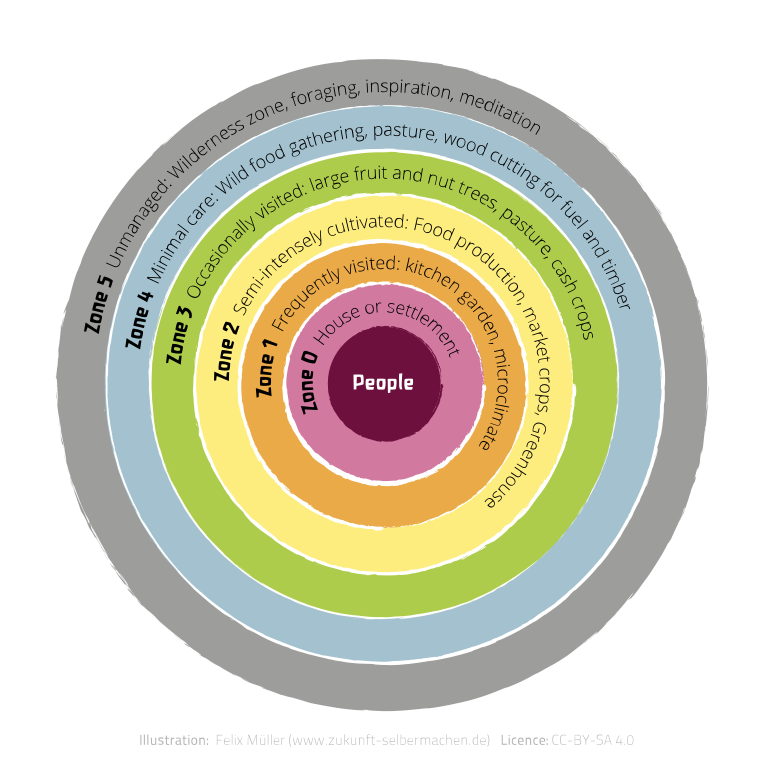
Permaculture is all about working with nature to create self-sustaining ecosystems in your yard. By making use of these key pointers, it is potential you will design a yard that thrives by itself, reduces waste, and promotes biodiversity.
Key Ideas of Permaculture in Gardening
Observe and Work collectively
Understanding your yard’s pure processes is the first step in permaculture. Spend time observing the patterns and interactions in your yard. Uncover how daylight, water, and wind have an effect on your crops, and use this data to make educated picks.
Use Renewable Belongings
In permaculture, it’s important to find out on sustainable gives and practices. Listed beneath are just a few methods to do that:
- Composting: Recycle pure waste to counterpoint your soil.
- Rainwater Harvesting: Accumulate and use rainwater to scale back reliance on municipal water provides.
- Mulching: Use pure gives like straw or leaves to retain soil moisture and suppress weeds.
Combine Reasonably Than Segregate
Mix crops and animals that help one another’s development to create a balanced ecosystem. This could embrace:
- Companion Planting: Planting sure crops collectively to income one another.
- Polyculture: Rising quite a few crops throughout the an equivalent area to imitate pure choice.
- Enchantment to Useful Bugs: Encourage bugs like bees and ladybugs, which assist with pollination and pest administration.
Catch and Retailer Vitality
Profit from the sources accessible in your yard. For instance:
- Image voltaic Panels: Use {photograph} voltaic vitality to energy yard units or lights.
- Thermal Mass: Incorporate gives that retailer warmth and launch it slowly, like stones or water barrels, to increase the rising season.
Produce No Waste
Permaculture encourages utilizing every little issue to its fullest potential. This incorporates:
- Upcycling: Repurposing earlier objects into helpful yard units or decorations.
- Zero-Waste Gardening: Discovering methods to make use of each a part of a plant, from roots to leaves, to cut back waste.
By making use of these permaculture pointers, it is potential you will create a yard that’s each productive and sustainable. It’s all about working with nature, fairly than in route of it, to assemble a thriving, eco-friendly yard.
4. Rainwater Harvesting

Hey there, yard followers! For a lot of who’re attempting to learn from pure sources, rainwater harvesting is a game-changer.
Gathering rainwater not solely conserves water nonetheless in addition to gives your crops with trendy, chemical-free hydration.
Let’s dive into some simple and surroundings pleasant methods for harvesting rainwater in your yard.
Methods for Harvesting Rainwater for Gardening
Rain Barrels
Rain barrels are one amongst many finest methods to assemble rainwater. Correct proper right here’s how one can set them up:
- Placement: Place rain barrels underneath downspouts to catch runoff out of your roof.
- Prepare: Be a part of a spigot to simply entry the saved water in your yard.
- Repairs: Defend the barrel lined to forestall particles and mosquitoes.
Soakaway Pits
Soakaway pits are good for steering rainwater as soon as extra into the underside. Correct proper right here’s what to do:
- Digging: Create a pit in your yard that can gather and soak up water.
- Filling: Line the pit with gravel or stones to strengthen drainage.
- Positioning: Place the pit in areas the place water tends to assemble naturally.
Swales
Swales are shallow, water-holding ditches that assist channel rainwater to your crops. Correct proper right here’s how it’s best to make use of them:
- Design: Dig shallow trenches alongside the contour of your yard.
- Operate: Swales decelerate water runoff and permit it to seep into the soil.
- Planting: Develop water-loving crops alongside the sides of the swales.
Rain Gardens

Rain gardens are designed to absorb and filter rainwater. Correct proper right here’s one of many easiest methods to create one:
- Location: Select a low-lying home that receives runoff.
- Soil Prep: Amend the soil to strengthen drainage and water absorption.
- Plant Choice: Use native crops that thrive in moist circumstances and assist filter the water.
These rainwater harvesting methods are easy nonetheless surroundings pleasant methods to make your yard additional sustainable.
Give them a strive, and watch your yard flourish with nature’s present!
5. Sustainable Soil Administration

Hey yard buddies! Preserving your soil healthful is the muse of any thriving yard.
Sustainable soil administration ensures your crops get the dietary nutritional vitamins they want whereas being sort to the surroundings.
Let’s uncover some eco-friendly practices to maintain up your soil in extreme sort.
Managing Soil Successfully being in an Eco-Good Methodology
Composting
Composting is a unbelievable decision to enrich your soil naturally. Correct proper right here’s how you can do it:
- Kitchen Scraps: Use vegetable peels, espresso grounds, and eggshells to create nutrient-rich compost.
- Yard Waste: Add leaves, grass clippings, and small branches to your compost pile.
- Turning: Typically flip your compost to hurry up decomposition and enhance aeration.
Mulching
Mulching helps retain soil moisture, suppress weeds, and add pure matter to the soil. Correct proper right here’s one of many easiest methods to mulch effectively:
- Pure Mulch: Use straw, wooden chips, or shredded leaves.
- Utility: Unfold mulch evenly spherical your crops, holding it just a few inches away from stems to forestall rot.
- Thickness: Apply a layer 2-3 inches thick to maximise advantages.
Cowl Cropping
Cowl crops defend and enrich your soil when your essential crops aren’t rising. Correct proper right here’s what to do:
- Choice: Select cowl crops like clover, rye, or vetch.
- Planting: Sow cowl crops all by off-seasons or between planting cycles.
- Advantages: Cowl crops stop erosion, restore nitrogen, and enhance soil constructing.
Crop Rotation
Rotating crops helps defend soil fertility and within the discount of pest and illness buildup. Correct proper right here’s one of many easiest methods to implement crop rotation:
- Planning: Divide your yard into sections and rotate crops with totally fully completely different nutrient needs.
- Schedule: Change the situation of crops every season to forestall nutrient depletion.
- Range: Embody quite a few crops to help soil successfully being.
Soil Testing
Frequent soil testing helps you perceive your soil’s nutrient ranges and pH. Correct proper right here’s one of many easiest methods to do it:
- Kits: Use a house soil testing bundle deal or ship samples to a neighborhood extension service.
- Evaluation: Take a look at for key dietary nutritional vitamins like nitrogen, phosphorus, and potassium.
- Amendments: Regulate your soil’s pH and nutrient ranges based mostly on try outcomes.
By managing your soil successfully being in an eco-friendly methodology, you’ll create a robust basis in your yard, guaranteeing healthful crops and bountiful harvests. Joyful gardening!
6. Pure Pest Administration

Coping with pests in your yard is generally a exact disadvantage, however you don’t ought to resort to harsh chemical substances.
Pure pest administration makes use of pure strategies to maintain up these pesky bugs at bay whereas defending your crops and the surroundings.
Let’s uncover some surroundings pleasant methods for pure pest administration.
Pure Strategies for Controlling Pests contained in the Yard
Useful Bugs
Prime-of-the-line methods to cope with pests is by encouraging helpful bugs in your yard. Correct proper right here’s how:
- Ladybugs: They devour aphids and fully completely different soft-bodied pests.
- Lacewings: These bugs eat aphids, mites, and caterpillars.
- Hoverflies: Their larvae feed on aphids and fully completely different small bugs.
Companion Planting
Companion planting consists of rising crops collectively that assist one another out. Listed beneath are some good combos:
- Marigolds: Plant marigolds close to greens to repel nematodes and aphids.
- Basil: Develop basil with tomatoes to discourage flies and mosquitoes.
- Nasturtiums: These flowers entice aphids away out of your veggies.
Neem Oil
Neem oil is a pure pesticide derived from the neem tree. It truly works efficiently in route of quite a few pests. Correct proper right here’s one of many easiest methods to utilize it:
- Mixing: Dilute neem oil with water in response to the label directions.
- Utility: Spray the combination on affected crops, defending all surfaces.
- Timing: Apply contained in the early morning or late night to keep away from harming helpful bugs.
Diatomaceous Earth
Diatomaceous earth is a powder constituted of fossilized algae. It’s good for controlling pests like slugs and beetles. Correct proper right here’s one of many easiest methods to utilize it:
- Sprinkling: Mud the powder all through the underside of your crops and instantly on pests.
- Reapplication: Reapply after rain or watering, on account of it loses effectiveness when moist.
- Security: Use food-grade diatomaceous earth to make sure security for you and your crops.
Garlic and Pepper Spray
A hand-crafted garlic and pepper spray can deter a variety of pests. Correct proper right here’s an easy recipe:
- Parts: Mix just a few garlic cloves, scorching peppers, and water.
- Straining: Stress the combination and add just a few drops of dish cleaning cleansing cleaning soap.
- Spraying: Apply the spray to your crops, specializing in areas with pest factors.
Handpicking
Often the proper method is the proper. Handpicking higher pests like caterpillars and beetles may be very surroundings pleasant. Correct proper right here’s what to do:
- Take a look at: Typically examine your crops for pests.
- Take away: Resolve off any pests you uncover and remove them.
- Consistency: Be diligent and examine your yard always.
Through the use of these pure strategies, it is potential you will administration pests in your yard whereas holding your crops and the surroundings secure and healthful. Joyful gardening, and may your crops protect pest-free!
7. Companion Planting
Companion planting is like having your crops crew as quite a bit as assist one another develop sturdy and healthful.
By selecting the best plant buddies, it is potential you will enhance development, repel pests, and enhance soil successfully being.
Let’s dive into the advantages and techniques of companion planting.
Advantages of Companion Planting
Pest Administration: Some crops naturally repel pests that can in each different case hurt their neighbors. For instance:
- Marigolds: These vivid flowers deter nematodes and aphids.
- Basil: Planting basil close to tomatoes will help defend flies and mosquitoes at bay.
- Nasturtiums: They act as a entice crop, luring aphids away out of your essential crops.
Improved Progress: Constructive plant mixtures can improve one another’s development. Examples embrace:
- Three Sisters: Corn, beans, and squash develop efficiently collectively. Corn gives help for beans, beans add nitrogen to the soil, and squash shades the underside, decreasing weeds.
- Radishes and Carrots: Radishes loosen the soil, making it simpler for carrots to develop.
Soil Successfully being: Companion planting can enhance soil constructing and fertility. Take note of these pairings:
- Legumes and Grains: Beans and peas restore nitrogen contained in the soil, benefiting heavy feeders like corn and wheat.
- Herbs and Greens: Herbs like dill and cilantro entice helpful bugs and enhance soil successfully being.
Methods of Companion Planting
Interplanting: Combine totally fully completely different crops contained within the an equivalent mattress to maximise area and sources. Correct proper right here’s one of many easiest methods to do it:
- Spacing: Plant smaller, fast-growing crops like lettuce between higher, slower-growing crops like tomatoes.
- Timing: Stagger planting occasions to ensure that crops don’t compete for sources on the an equivalent time.
Lure Cropping: Use sacrificial crops to draw pests away out of your essential crops. Correct proper right here’s one of many easiest methods to implement this:
- Planting: Develop entice crops like nasturtiums or mustard close to weak crops.
- Repairs: Monitor entice crops and take away pests as wanted.
Guild Planting: Create plant communities that income one another, generally referred to as guilds. Correct proper right here’s an event:
- Fruit Tree Guild: Embody a fruit tree with nitrogen-fixing crops (clover), pest-repellent herbs (garlic), and mulch crops (comfrey) to help the tree’s successfully being.
Succession Planting: Plan for normal harvests by planting crops in succession. Correct proper right here’s how:
- Planning: Begin with cool-season crops (lettuce, spinach), alter to with warm-season crops (tomatoes, peppers), and end with fall crops (kale, broccoli).
- Overlap: Overlap planting occasions in order that as one crop finishes, one completely different is able to take its place.
Through the use of these companion planting methods, it is potential you will create an additional resilient and productive yard.
Joyful planting, and may your yard buddies thrive collectively!
8. Native Crops
Utilizing native crops in your yard is a unbelievable decision to help native wildlife and create a sustainable, low-maintenance yard.
Native crops are tailored to your native native local weather and soil, making them simpler to develop and defend.
Let’s uncover how utilizing native crops can promote biodiversity and sustainability.
Utilizing Native Crops to Promote Biodiversity and Sustainability
Advantages of Native Crops
Helps Native Wildlife: Native crops present meals and habitat for native birds, bugs, and fully completely different wildlife. Correct proper right here’s how:
- Pollinators: Native flowers entice bees, butterflies, and fully completely different pollinators.
- Birds: Native shrubs and timber present shelter and meals for birds.
- Useful Bugs: Native crops entice bugs that administration pests naturally.
Low Repairs:
Due to they’re tailored to your area, native crops usually require quite a bit a lot much less water, fertilizer, and pest administration. This makes them:
- Drought-Resistant: They thrive with pure rainfall.
- Pest-Resistant: They’re much a lot much less additional liable to be affected by native pests and diseases.
- Soil-Adaptive: They develop efficiently in native soil circumstances with out having amendments.
Environmental Advantages:
Native crops assist enhance the surroundings in loads of methods:
- Soil Successfully being: Their deep roots enhance soil constructing and forestall erosion.
- Water Conservation: They within the discount of the necessity for irrigation, conserving water.
- Carbon Sequestration: Bushes and shrubs seize and retailer carbon, serving to battle native local weather change.
Methods for Utilizing Native Crops
Analysis and Choice:
Begin by figuring out native crops that thrive in your home. Correct proper right here’s how:
- Native Extension Suppliers: Contact native agricultural extension workplaces for lists of native crops.
- Native Plant Nurseries: Go to nurseries specializing in native species.
- On-line Belongings: Use web sites devoted to native crops to hunt out relevant species.
Designing with Native Crops:
Incorporate native crops into your yard design. Listed beneath are some concepts:
- Pollinator Gardens: Create a yard with quite a few native flowers that bloom at totally fully completely different occasions to produce a mild meals present for pollinators.
- Wildlife Habitats: Embody a mixture of native timber, shrubs, and groundcovers to create habitats for birds and fully completely different wildlife.
- Pure Landscaping: Use native crops to create natural-looking landscapes that mix seamlessly with the encompassing surroundings.
Planting and Repairs:
If you happen to’ve chosen your crops, it’s time to get them inside the bottom. Correct proper right here’s what to do:
- Planting Time: Plant native species all by their optimum planting season, often inside the autumn or spring.
- Watering: Water newly planted natives till they’re established. After that, they need to thrive with minimal watering.
- Pruning and Care: Prune and look after native crops as wanted, however take into account they often require quite a bit a lot much less repairs than non-natives.
Utilizing native crops is a win-win in your yard and the surroundings.
They make your yard additional resilient, entice helpful wildlife, and assist defend native ecosystems. Joyful gardening with natives!
9. Edible Landscaping
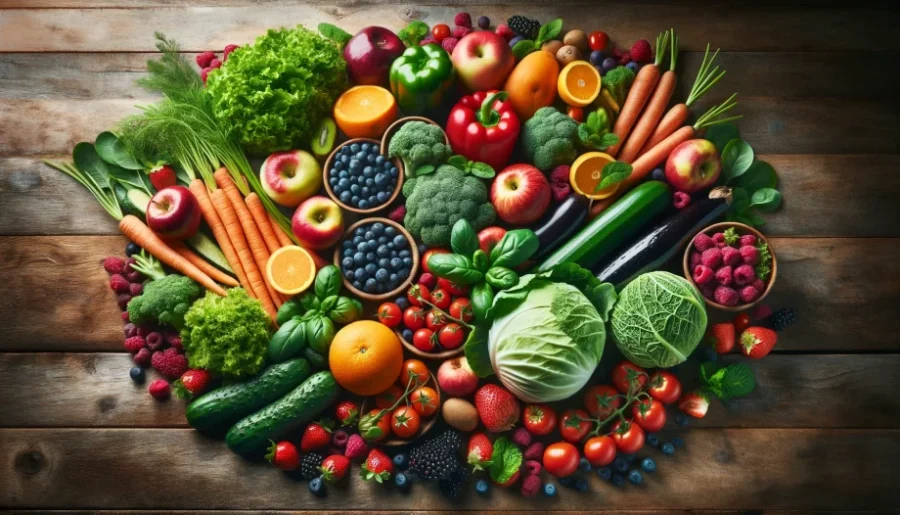

Edible landscaping combines the beauty of decorative crops with the practicality of rising your personal meals.
By designing a panorama that produces meals, it is potential you will get pleasure from trendy fruits, greens, and herbs right out of your yard whereas making a stunning exterior area.
Let’s dig into some ideas and concepts for edible landscaping.
Designing a Panorama That Produces Meals
Advantages of Edible Landscaping
Aesthetic Enchantment: Edible crops may be merely as fairly as decorative ones. Correct proper right here’s why:
- Selection: Vibrant greens, fruits, and herbs add seen curiosity.
- Textures: Fully fully completely different plant textures create a wealthy, layered look.
- Flowers: Many edible crops, like chives and nasturtiums, have collaborating flowers.
Practicality: Rising your personal meals reduces grocery funds and gives trendy, nutritious produce. Advantages embrace:
- Comfort: Fashionable herbs and veggies are frequently inside attain.
- Meals plan: Dwelling-grown produce is commonly additional nutritious and flavorful.
- Sustainability: Reduces the carbon footprint by eliminating the necessity for transport.
Design Ideas for Edible Landscaping
Plan Your Format: Take note of each aesthetics and practicality. Correct proper right here’s one of many easiest methods to begin:
- Zones: Designate areas for quite a lot of types of crops, akin to greens, fruits, and herbs.
- Daylight: Plant sun-loving edibles in sunny spots and shade-tolerant ones in shadier areas.
- Accessibility: Guarantee paths and walkways enable quick entry to all parts of your yard.
Incorporate Edibles with Ornamentals: Combine edible crops with ornamental ones for a cohesive look. Some concepts embrace:
- Border Crops: Use herbs like rosemary and lavender as border crops.
- Climbers: Develop climbing edibles like beans and peas on trellises or fences.
- Groundcovers: Use low-growing edibles like thyme and strawberries as groundcovers.
Select Multi-Objective Crops: Choose crops that supply an a variety of benefits. Listed beneath are just a few examples:
- Fruit Bushes: Present shade, magnificence, and scrumptious fruit.
- Herbs: Many herbs are each culinary and medicinal, along with worth to your yard.
- Perennials: Plant perennial edibles like asparagus and rhubarb for year-after-year harvests.
Create Focal Elements: Make your yard visually attention-grabbing with edible focal parts. Take note of these picks:
- Fruit Bushes: Plant a phenomenal apple or cherry tree as a centerpiece.
- Raised Beds: Use raised beds for greens, along with constructing and peak.
- Herb Spirals: Assemble an herb spiral to avoid dropping area and create a dangling attribute.
Repairs and Care
Watering: Frequent watering is important for healthful crops. Listed beneath are some ideas:
- Drip Irrigation: Use drip irrigation to ship water on to the roots.
- Mulching: Mulch spherical crops to retain moisture and within the discount of weeds.
Soil Successfully being: Defend your soil wealthy and fertile with these practices:
- Composting: Add compost to your soil to strengthen fertility.
- Crop Rotation: Rotate crops to forestall nutrient depletion and within the discount of pests.
Pest Administration: Defend your crops from pests utilizing pure strategies:
- Companion Planting: Plant pest-repellent herbs like basil and marigolds.
- Useful Bugs: Enchantment to helpful bugs like ladybugs and lacewings.
Edible landscaping is an outstanding decision to mix magnificence and effectivity in your yard.
By integrating edible crops into your panorama, it is potential you will get pleasure from trendy, home-grown meals whereas making a stunning exterior area.
Joyful gardening, and revenue from the fruits of your labor!
10. Metropolis Gardening

Howdy, metropolis gardeners! Metropolis gardening is all about benefiting from small areas to develop your personal meals and greenery.
Whether or not or not or not you need to have a tiny balcony or a small yard, it is potential you will nonetheless create a thriving yard.
Let’s uncover some ideas and techniques that will allow you to attain metropolis gardening.
Ideas and Methods for Metropolis Gardening
Maximize Area
Vertical Gardening: Benefit from vertical area to develop additional crops. Correct proper right here’s how:
- Trellises and Arbors: Develop climbing crops like tomatoes, cucumbers, and beans.
- Hanging Baskets: Use hanging baskets for strawberries, herbs, and flowers.
- Wall Planters: Prepare wall-mounted planters for quite a few herbs and small greens.
Container Gardening: Superb for balconies and patios. Ideas embrace:
- Pot Choice: Select pots with good drainage and related dimension for the crops.
- Soil Combine: Use high-quality potting soil blended with compost for dietary nutritional vitamins.
- Mobility: Place containers on wheeled stands to maneuver them merely for daylight or shelter.
Develop Upwards: Use stackable planters or cabinets to develop additional in quite a bit a lot much less area.
Optimize Daylight
Daylight Publicity: Guarantee your crops get sufficient delicate. Correct proper right here’s how:
- Location: Place crops the place they pay money for in any case 6 hours of daylight day by day.
- Reflectors: Use reflective surfaces to extend delicate for crops in shady areas.
- LED Develop Lights: Complement pure delicate with LED develop lights, notably for indoor gardens.
Soil and Fertilization
Soil Top of the range: Good soil is essential for healthful crops. Correct proper right here’s what to do:
- Container Soil: Use a mixture designed for containers, which retains moisture and drains efficiently.
- Soil Testing: Take a look at your soil and amend it with compost or pure fertilizers as wanted.
Fertilization: Feed your crops to maintain up them healthful. Listed beneath are some ideas:
- Pure Fertilizers: Use pure picks like fish emulsion, worm castings, or compost tea.
- Frequent Feeding: Fertilize in response to the needs of the crops, usually each few weeks.
Watering
Setting nice Watering: Metropolis gardens often require additional frequent watering. Correct proper right here’s one of many easiest methods to do it efficiently:
- Self-Watering Containers: Use containers with built-in reservoirs to scale back watering frequency.
- Drip Irrigation: Prepare a drip irrigation system to ship water on to the roots.
- Water Conservation: Accumulate rainwater in barrels for irrigation.
Plant Choice
Select Relevant Crops: Choose crops that thrive in small areas. Listed beneath are some good selections:
- Herbs: Basil, mint, parsley, and thyme develop efficiently in pots and small areas.
- Greens: Cherry tomatoes, peppers, lettuce, and radishes are good for containers.
- Fruits: Dwarf types of strawberries, blueberries, and citrus timber may be grown in pots.
Pest Administration
Pure Strategies: Defend pests at bay with out chemical substances. Correct proper right here’s how:
- Companion Planting: Develop pest-repellent crops like marigolds and garlic close to your crops.
- Neem Oil: Use neem oil spray to deal with pests naturally.
- Useful Bugs: Enchantment to ladybugs and fully completely different helpful bugs to assist cope with pest populations.
Neighborhood Gardening
Get Concerned: Be a part of or begin a neighborhood yard. Advantages embrace:
- Shared Belongings: Entry to units, knowledge, and shared area.
- Social Interplay: Be a part of with fellow gardeners and share ideas and produce.
- Discovering out Alternate choices: Look at new gardening methods and buy inspiration from others.
Metropolis gardening means you’ll be able to get pleasure from trendy produce and nice crops, regardless of how restricted your area can also be.
With the next recommendation and techniques, you’ll be efficiently in your decision to making a vibrant metropolis yard. Joyful gardening!
11. Vertical Gardening
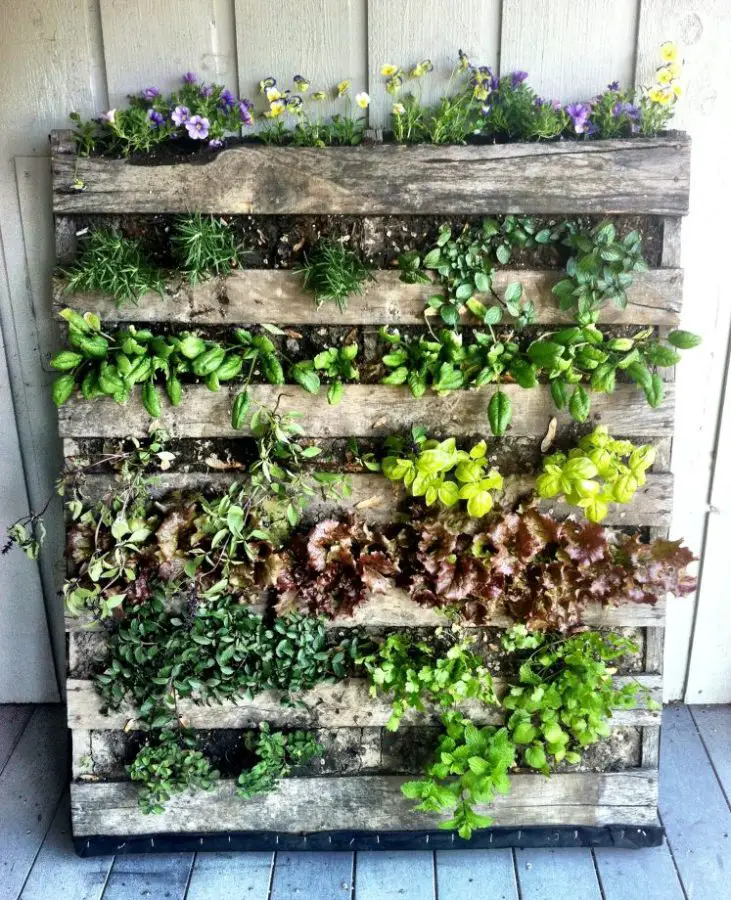

Hey there, space-saving gardeners! Vertical gardening is a unbelievable decision to maximise your rising home, notably for people who’re working with restricted area.
By rising upwards, it is potential you will create a lush, productive yard with out taking over fairly a bit floor area.
Let’s uncover some artistic vertical gardening concepts that will allow you to get began.
Area-Saving Vertical Gardening Concepts
Trellises and Arbors
Utilizing trellises and arbors permits climbing crops to develop vertically. Correct proper right here’s how:
- Climbing Greens: Develop peas, beans, and cucumbers on sturdy trellises.
- Ornamental Arbors: Use arbors to help flowering vines like clematis and wisteria.
- DIY Trellises: Create your personal trellises utilizing gives like bamboo or repurposed wooden.
Hanging Baskets
Hanging baskets are great for small areas like balconies. Correct proper right here’s what to plant:
- Herbs: Basil, thyme, and mint thrive in hanging baskets.
- Strawberries: Get pleasure from trendy strawberries from cascading crops.
- Flowers: Add coloration with flowering crops like petunias and fuchsias.
Wall Planters
Rework partitions into productive yard areas with wall planters. Correct proper right here’s how:
- Vertical Planter Purposes: Use pre-made vertical planter methods for easy setup.
- Pallet Gardens: Repurpose picket pallets into wall planters for herbs and small veggies.
- Pocket Planters: Supplies pocket planters are good for rising quite a few crops vertically.
Stackable Planters
Stackable planters can help you develop additional in quite a bit a lot much less area by layering crops. Correct proper right here’s what to strive:
- Strawberry Towers: Stackable planters are great for rising strawberries.
- Herb Towers: Develop quite a few herbs in a compact, vertical area.
- Vegetable Towers: Use stackable methods to develop small greens like lettuce and spinach.
Residing Partitions
Residing partitions, or inexperienced partitions, are a dangling decision to develop crops vertically. Correct proper right here’s one of many easiest methods to create one:
- Modular Panels: Use modular panel methods that protect soil and crops.
- Irrigation: Prepare a drip irrigation system to make sure even watering.
- Plant Choice: Select a mixture of crops that thrive in vertical environments, akin to ferns, ivy, and succulents.
Vertical Hydroponics
Vertical hydroponic methods are good for maximizing area and effectivity. Correct proper right here’s how they work:
- Nutrient Movie Methodology (NFT): This methodology makes use of a skinny movie of nutrient-rich water to feed crops.
- Tower Gardens: Vertical towers with slots for particular specific individual crops, circulating nutrient reply.
- Advantages: Hydroponics permits for sooner development and better yields in a smaller footprint.
A-Physique Buildings
A-frame buildings present ample vertical rising area. Correct proper right here’s one of many easiest methods to utilize them:
- Development: Assemble A-frames from wooden or metallic for sturdy help.
- Planting: Develop trailing crops like squash, melons, and tomatoes.
- Mobility: A-frame buildings may be merely moved to optimize daylight publicity.
Upcycled Offers
Get artistic with upcycled gives to assemble vertical gardens. Correct proper right here’s what to make the most of:
- Gutters: Mount earlier gutters on partitions to develop herbs and small crops.
- PVC Pipes: Create vertical planters from PVC pipes with drilled holes for crops.
- Ladders: Repurpose an earlier ladder as a tiered plant stand.
Vertical gardening is an effective and trendy decision to learn out of your gardening area.
With these concepts, it is potential you will create a lush, productive yard that grows up fairly than out. Joyful vertical gardening!
12. Container Gardening
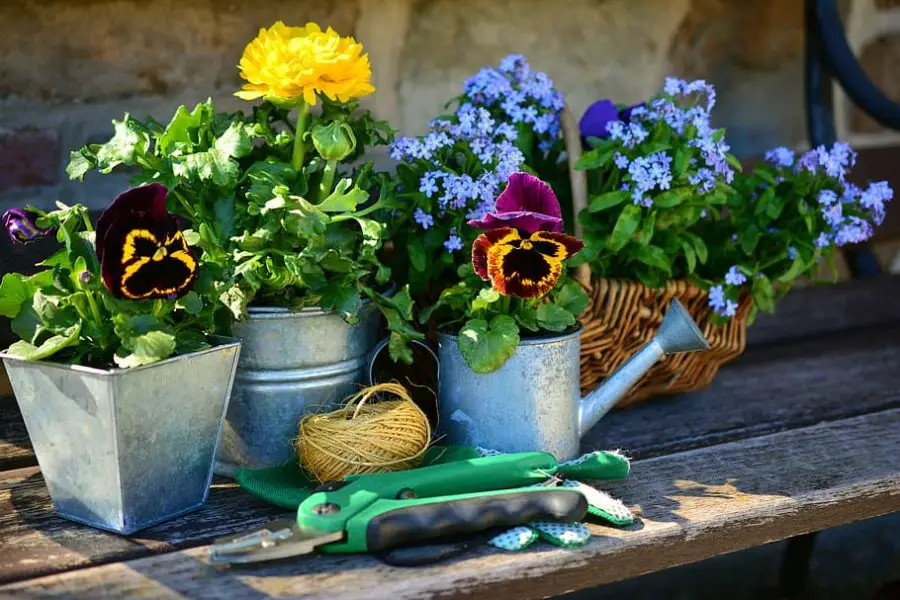

Container gardening is correct for these with restricted area, permitting you to develop quite a few crops in pots and containers.
Plus, it’s simple to cope with and may be terribly sustainable. Let’s dive into some sustainable practices for container gardening that will allow you to create a thriving, eco-friendly yard.
Sustainable Practices for Container Gardening
Deciding on Containers
Deciding on the proper containers is the first step to worthwhile container gardening. Correct proper right here’s one of many easiest methods to make sustainable selections:
- Repurposed Containers: Use objects like earlier buckets, crates, and barrels as plant containers.
- Biodegradable Pots: Select pots constituted of gives like coir, peat, or biodegradable plastics.
- Sturdy Offers: Go for long-lasting gives akin to ceramic, metallic, or high-quality plastic to scale back waste.
Soil and Compost
Utilizing the proper soil combine is essential for container gardening. Correct proper right here’s how to make sure it’s sustainable:
- Pure Potting Combine: Use pure potting combine free from artificial chemical substances.
- Selfmade Compost: Combine your home made compost with potting soil so as in order so as to add dietary nutritional vitamins.
- Soil Reuse: Reuse soil from earlier rising seasons by refreshing it with compost and pure fertilizers.
Watering Practices
Setting nice watering helps defend water and retains your crops healthful. Listed beneath are some ideas:
- Self-Watering Containers: Use containers with built-in reservoirs to scale back watering frequency.
- Drip Irrigation: Set up a drip irrigation system to ship water on to the plant roots.
- Mulching: Apply a layer of mulch on extreme of the soil to retain moisture and within the discount of evaporation.
Fertilization
Feeding your container crops sustainably is essential to their development. Correct proper right here’s how:
- Pure Fertilizers: Use pure fertilizers like fish emulsion, seaweed extract, or compost tea.
- Sluggish-Launch Alternatives: Select slow-release pure fertilizers to produce widespread dietary nutritional vitamins over time.
- Selfmade Selections: Make your personal liquid fertilizers from compost or manure tea.
Plant Choice
Choosing the right crops may make your container yard additional sustainable. Take note of these picks:
- Native Crops: Choose native crops which is maybe tailored to your native native local weather and soil circumstances.
- Drought-Tolerant Crops: Go for crops that require quite a bit a lot much less water, akin to succulents and Mediterranean herbs.
- Perennials: Develop perennial crops that come as soon as extra 12 months after 12 months, decreasing the necessity for replanting.
Pest Administration
Managing pests sustainably helps defend your container yard healthful. Correct proper right here’s how:
- Pure Predators: Encourage helpful bugs like ladybugs and lacewings to deal with pests.
- Neem Oil: Use neem oil as a pure pesticide to maintain up pests at bay.
- Companion Planting: Develop companion crops that repel pests, akin to basil with tomatoes or marigolds with greens.
Recycling and Upcycling
Incorporate recycling and upcycling into your container gardening practices. Listed beneath are some concepts:
- Reuse Containers: Reuse earlier containers for mannequin spanking new crops, and clear them totally between makes use of.
- Upcycle Offers: Flip residence objects like earlier boots, tea kettles, and even furnishings into distinctive plant containers.
- Recycling: Recycle plant labels, earlier pots, and fully completely different gardening gives each time attainable.
Container gardening is a unbelievable decision to develop your personal meals and flowers in a sustainable methodology, regardless of how small your area is.
With these practices, it is potential you will create a productive and eco-friendly container yard that brings pleasure and shock to your property.
Joyful container gardening!
13. Greenhouses and Chilly Frames
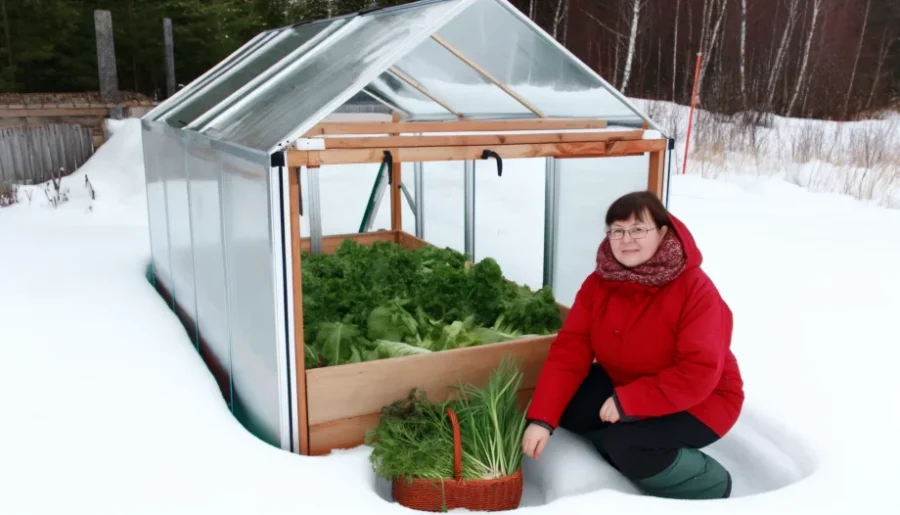

Howdy, yard followers! Greenhouses and chilly frames are unbelievable units for extending your rising season and defending crops from harsh native climate.
When used sustainably, they’re going to help you to develop additional whereas minimizing environmental impression.
Let’s uncover some ideas for utilizing greenhouses and chilly frames in an eco-friendly methodology.
Utilizing Greenhouses and Chilly Frames Sustainably
Deciding on Offers
Deciding on sustainable gives in your greenhouse or chilly physique is the first step. Correct proper right here’s how:
- Recycled Offers: Use recycled or repurposed gives like earlier residence house home windows, doorways, or salvaged wooden to assemble your buildings.
- Sturdy Alternatives: Go for long-lasting gives akin to polycarbonate panels or handled wooden to make sure your greenhouse or chilly physique stands the try of time.
- Pure Insulation: Use pure insulation gives like straw bales or recycled bubble wrap to maintain up your greenhouse heat.
Vitality Effectivity
Sustaining an energy-efficient greenhouse or chilly physique helps within the discount of your environmental footprint. Listed beneath are some ideas:
- Passive Image voltaic Design: Place your greenhouse to maximise daylight publicity, and use thermal mass gives like water barrels or stones to retailer and launch warmth.
- Air motion: Guarantee applicable air motion to deal with temperature and humidity, decreasing the necessity for additional heating or cooling.
- Vitality-Setting nice Heating: If supplemental heating is important, use energy-efficient picks like {photograph} voltaic heaters or compost-heated beds.
Water Conservation
Setting nice water use is essential for sustainable greenhouse and chilly physique gardening. Correct proper right here’s one of many easiest methods to save lots of plenty of water:
- Rainwater Harvesting: Accumulate rainwater from the greenhouse roof in barrels and use it to water your crops.
- Drip Irrigation: Prepare a drip irrigation system to ship water on to the roots, minimizing waste.
- Mulching: Apply mulch to the soil in your greenhouse to retain moisture and within the discount of evaporation.
Soil and Fertilization
Sustaining healthful soil and fertilizing sustainably are key to productive greenhouse and chilly physique gardening. Correct proper right here’s what to do:
- Pure Soil: Use pure potting combine and amend it with handmade compost or well-rotted manure.
- Crop Rotation: Apply crop rotation inside your greenhouse to forestall soil depletion and within the discount of pest and illness buildup.
- Pure Fertilizers: Use pure fertilizers like fish emulsion, seaweed extract, or compost tea to feed your crops.
Pest Administration
Defend pests at bay utilizing pure strategies to look after a healthful rising surroundings. Listed beneath are some methods:
- Useful Bugs: Introduce helpful bugs like ladybugs and predatory mites to deal with pests naturally.
- Neem Oil: Use neem oil as a pure pesticide to maintain up your crops pest-free.
- Companion Planting: Develop pest-repellent crops like marigolds and basil alongside your crops to discourage undesirable bugs.
Season Extension
Maximize your rising season sustainably with these methods:
- Chilly Frames: Use chilly frames to harden off seedlings contained in the spring and lengthen the rising season inside the autumn.
- Row Covers: Benefit from row covers inside your greenhouse for added frost safety.
- Succession Planting: Plan succession planting schedules to learn out of your greenhouse area year-round.
Through the use of greenhouses and chilly frames sustainably, it is potential you will get pleasure from trendy produce and flowers all 12 months prolonged whereas minimizing your environmental impression.
The following solutions will allow you to create a productive and eco-friendly rising surroundings. Joyful gardening in your greenhouses and chilly frames!
14. No-Until Gardening
No-till gardening is a unbelievable methodology to strengthen soil successfully being and within the discount of labor whereas fostering a thriving yard.
By minimizing soil disturbance, it is potential you will promote a additional healthful ecosystem in your crops.
Let’s uncover the advantages and methods of no-till gardening to get you began.
Advantages and Strategies of No-Until Gardening
Advantages of No-Until Gardening
Improved Soil Successfully being: No-till gardening enhances soil constructing and fertility. Correct proper right here’s how:
- Soil Constructing: Leaving the soil undisturbed helps defend its pure constructing, which helps healthful root methods.
- Pure Matter: No-till practices improve pure matter contained in the soil, enhancing its functionality to retain moisture and dietary nutritional vitamins.
- Microbial Life: Minimizing disturbance helps defend the helpful microorganisms that play an essential place in soil successfully being.
Diminished Erosion: No-till gardening helps stop soil erosion by sustaining a defending cowl. Correct proper right here’s why it truly works:
- Cowl Crops: Utilizing cowl crops retains the soil lined and reduces erosion from wind and rain.
- Mulch: Mulching with pure gives like straw or leaves protects the soil floor and reduces runoff.
Quite a bit a lot much less Labor: No-till gardening can cease effort and time. Correct proper right here’s the easiest way it makes gardening simpler:
- Weed Suppression: Mulching and canopy cropping within the discount of weed development, reducing down on weeding time.
- Soil Preparation: With out the necessity to until, it is potential you will skip the heavy lifting and go straight to planting.
Strategies of No-Until Gardening
Mulching
Mulching is a key apply in no-till gardening. Correct proper right here’s one of many easiest methods to do it:
- Offers: Use pure mulches like straw, leaves, grass clippings, or wooden chips.
- Utility: Unfold a thick layer of mulch (2-4 inches) over your yard beds, guaranteeing the soil is well-covered.
- Repairs: Replenish the mulch on account of it decomposes to maintain up the soil protected and enriched.
Cowl Cropping
Cowl cropping consists of planting particular crops to guard and enrich the soil. Correct proper right here’s what to do:
- Choice: Select cowl crops like clover, rye, or vetch that restore nitrogen and enhance soil successfully being.
- Planting: Sow cowl crops contained in the low season or between essential crops.
- Termination: Cut back down cowl crops prior to they go to seed, and depart the residue on the soil floor as mulch.
Lasagna Gardening
Lasagna gardening, moreover referred to as sheet composting, builds soil layers instantly on extreme of current soil. Correct proper right here’s how:
- Layering: Alternate layers of brown (cardboard, straw) and inexperienced (kitchen scraps, grass clippings) gives.
- Establishing: Proceed along with layers till the pile is about 2 ft excessive. Over time, it could break down and enrich the soil.
- Planting: Plant instantly into the lasagna mattress as shortly as a result of the gives have decomposed sufficiently.
Direct Planting
Planting instantly into the soil with out tilling is an easy methodology. Correct proper right here’s one of many easiest methods to get began:
- Preparation: Clear the planting home of big particles and weeds.
- Digging Holes: Use a yard trowel or dibber to dig planting holes in your seeds or seedlings.
- Mulching: Apply mulch all through the crops to suppress weeds and retain moisture.
Compost Addition
Along with compost to the soil floor helps enhance fertility with out disturbing the soil. Correct proper right here’s how:
- Spreading: Unfold a layer of compost (1-2 inches) over your yard beds.
- Extreme-Dressing: Apply compost as a top-dressing spherical current crops to produce ongoing dietary nutritional vitamins.
- No Digging: Let pure processes incorporate the compost into the soil over time.
By embracing no-till gardening, it is potential you will create a additional healthful, additional sustainable yard with quite a bit a lot much less effort.
These advantages and methods will allow you to get began in your no-till journey.
15. Seed Saving
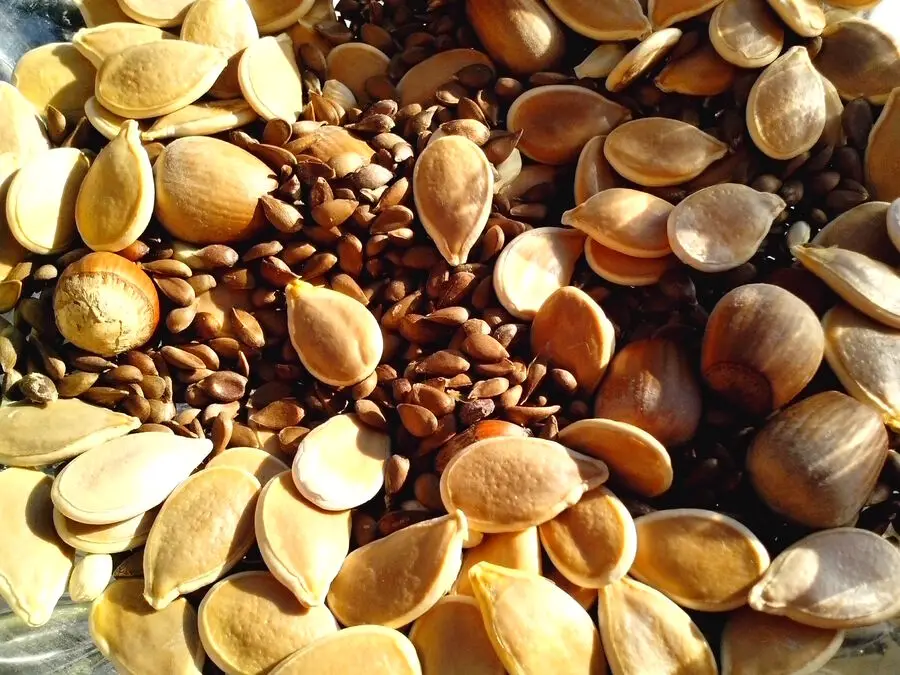

Saving seeds out of your yard is a rewarding and sustainable apply which suggests you’ll be able to develop your favourite crops 12 months after 12 months.
By discovering out the methods for seed saving, it is potential you will guarantee a mild current of your hottest varieties and contribute to preserving plant biodiversity.
Let’s dive into some surroundings pleasant strategies for saving seeds out of your yard.
Methods for Saving Seeds from Your Yard
Deciding on the Right Crops
Begin by deciding on the suitable crops for seed saving. Correct proper right here’s what to contemplate:
- Heirloom Varieties: Select open-pollinated heirloom varieties, as their seeds produce crops true to sort.
- Healthful Crops: Save seeds out of your healthiest, most vigorous crops to make sure sturdy offspring.
- Isolate Varieties: To take care of up pure strains, keep away from cross-pollination by isolating totally fully differing types of the an equivalent species.
Harvesting Seeds
Harvesting seeds on the right time is essential for worthwhile seed saving. Correct proper right here’s how:
- Dry Seeds: For crops like beans, peas, and lettuce, enable seeds to mature and dry on the plant prior to harvesting.
- Moist Seeds: For crops like tomatoes, cucumbers, and squash, scoop out the seeds from ripe fruits and separate them from the pulp.
- Seed Heads: For crops like sunflowers and dill, wait till the seed heads are dry and the seeds merely come off.
Cleansing Seeds
Cleansing seeds precisely ensures good storage and germination costs. Correct proper right here’s one of many easiest methods to clear quite a lot of types of seeds:
- Dry Seeds: Shake or rub dry seeds to take away any chaff or plant particles. Use a present show or sieve to assist separate the seeds.
- Moist Seeds: Rinse moist seeds in water to take away any remaining pulp. For tomatoes, ferment the seeds in water for just a few days to take away the gelatinous coating.
- Giant Seeds: For higher seeds like squash, wash them totally and allow them to dry fully.
Drying Seeds
Acceptable drying is important to forestall mould and guarantee longevity. Correct proper right here’s what to do:
- Air Drying: Unfold seeds in a single layer on a paper towel, mesh present show, or plate. Place them in a heat, dry, and well-ventilated home.
- Drying Time: Permit seeds to dry for one to 2 weeks. Make sure they’re fully dry prior to storing them.
- Keep away from Warmth: Don’t use direct daylight or excessive warmth, as it will possibly damage the seeds.
Storing Seeds
Storing seeds appropriately retains them viable for future planting. Correct proper right here’s how:
- Containers: Retailer seeds in hermetic containers like glass jars, envelopes, or plastic baggage. Label every container with the plant title and harvest date.
- Cool and Dry: Defend seeds in a cool, dry place. A fridge or a darkish, cool pantry is true.
- Desiccants: Embody desiccants like silica gel packets or powdered milk contained in the storage containers to absorb moisture.
Testing Seed Viability
Testing the viability of your saved seeds ensures worthwhile germination. Correct proper right here’s an easy method:
- Pattern Testing: Place just a few seeds on a moist paper towel and fold it over. Defend the towel moist and in a heat place.
- Assertion: Take a look at for germination after just a few days. A excessive germination worth signifies good seed viability.
Renewing Seed Inventory
Typically renewing your seed inventory retains your assortment trendy. Correct proper right here’s how:
- Annual Saving: Save seeds out of your crops yearly to look after a viable seed current.
- Quite a few Assortment: Save seeds from quite a few crops to make sure genetic choice and suppleness.
By mastering these seed saving methods, it is potential you will get pleasure from some nice advantages of a self-sustaining yard and defend your favourite plant varieties for years to come back again once more. Joyful seed saving!
16. Aquaponics and Hydroponics

Aquaponics and hydroponics are revolutionary and sustainable methods to develop crops with out typical soil.
These methods can save water, within the discount of waste, and produce healthful crops shortly.
Let’s uncover how one can set up and defend sustainable aquaponics and hydroponics methods in your yard.
Sustainable Aquaponics and Hydroponics Purposes
Aquaponics
Aquaponics combines aquaculture (elevating fish) with hydroponics (rising crops in water). Correct proper right here’s the easiest way it actually works:
How Aquaponics Works:
- Fish Tank: Fish produce waste, which is wealthy in dietary nutritional vitamins.
- Biofilter: Useful micro organism convert fish waste into nitrates, a kind of nitrogen that crops can use.
- Develop Mattress: Crops take within the nitrates, cleansing the water, which is then recirculated as soon as extra to the fish tank.
Advantages of Aquaponics:
- Water Effectivity: Aquaponics makes use of as quite a bit as 90% quite a bit a lot much less water than typical soil gardening.
- Sustainable Meals Manufacturing: Offers each fish and plant harvests.
- Diminished Waste: Fish waste is repurposed as plant fertilizer, making a closed-loop system.
Setting Up an Aquaponics System:
- Select Your Fish: Tilapia, catfish, and goldfish are frequent selections for aquaponics methods.
- Develop Media: Use gives like clay pebbles or gravel in your develop mattress for plant help.
- Pump and Plumbing: Prepare a water pump and plumbing to motion into water between the fish tank and develop mattress.
- Lighting: Guarantee your crops pay money for satisfactory delicate, every by way of pure daylight or LED develop lights.
Sustaining an Aquaponics System:
- Monitor Water Top of the range: Typically examine pH, ammonia, nitrate, and nitrite ranges to maintain up fish and crops healthful.
- Feed the Fish: Present a balanced meals routine in your fish, and keep away from overfeeding to look after water top of the range.
- Plant Care: Harvest crops repeatedly and monitor for pests or diseases.
Hydroponics
Hydroponics is a manner of rising crops in nutrient-rich water with out soil. Correct proper right here’s the easiest way it actually works:
How Hydroponics Works:
- Nutrient Reply: Crops pay money for dietary nutritional vitamins instantly from a water-based reply.
- Help System: Crops are held in place with an inert medium like rock wool, clay pebbles, perlite, and even coco coir.
- Recirculation: The nutrient reply is recirculated by way of the system to make sure crops get the dietary nutritional vitamins they want.
Advantages of Hydroponics:
- Sooner Progress: Crops develop sooner on account of they’ve direct entry to dietary nutritional vitamins and oxygen.
- Area Effectivity: Hydroponic methods may be set up vertically, saving area.
- Water Conservation: Makes use of as quite a bit as 90% quite a bit a lot much less water than soil gardening.
Setting Up a Hydroponics System:
- System Kind: Select a system sort akin to Deep Water Customized (DWC), Nutrient Movie Methodology (NFT), flood and drain, or Drip System.
- Nutrient Reply: Use a hydroponic nutrient combine tailor-made to the needs of your crops.
- Help Medium: Choose an inert medium to anchor your crops in place.
- Lighting: Guarantee your crops get satisfactory delicate, every from pure daylight or LED develop lights.
Sustaining a Hydroponics System:
- Monitor pH and Dietary nutritional vitamins: Typically examine and alter the pH and nutrient ranges in your reply.
- Water Temperature: Defend optimum water temperature in your crops, usually between 65-75°F (18-24°C).
- Clear and Sterilize: Defend your system clear to forestall algae and illness buildup.
Sustainable Practices for Each Purposes
- Renewable Vitality: Use {photograph} voltaic panels to energy pumps and lights.
- Water Conservation: Reuse and recycle water inside your methods.
- Pure Dietary nutritional vitamins: Use pure or pure nutrient selections to feed your crops.
- Native Sourcing: Present fish, seeds, and gives regionally to scale back your carbon footprint.
By adopting aquaponics and hydroponics, it is potential you will get pleasure from a terribly ambiance nice, sustainable gardening method that produces trendy, healthful meals year-round.
Joyful rising alongside alongside along with your aquaponic and hydroponic methods!
17. Neighborhood Gardens
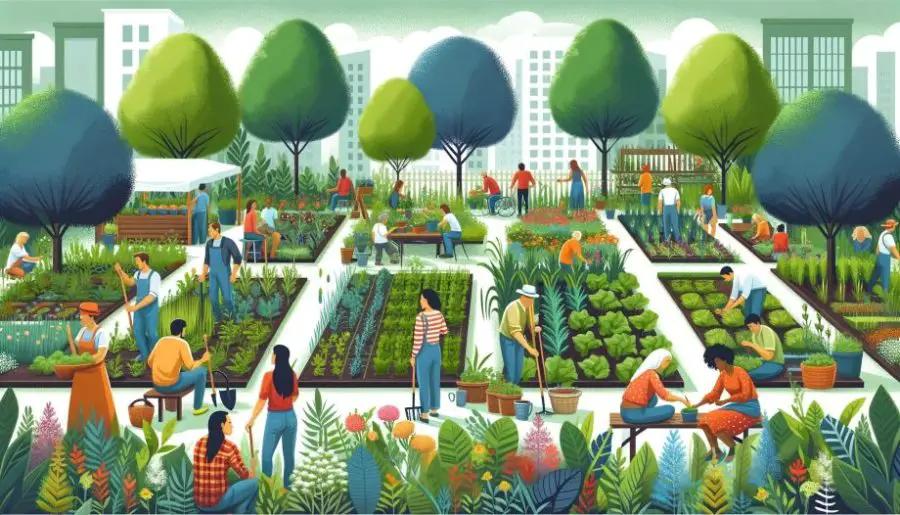

Howdy, neighbors! Neighborhood gardens are inconceivable areas the place individuals come collectively to develop meals, share knowledge, and foster a fashion of neighborhood.
They supply pretty a few advantages, from enhancing entry to trendy produce to creating inexperienced areas in metropolis areas.
Let’s uncover some nice advantages of neighborhood gardens and the best way one can begin one in your neighborhood.
Advantages and Methods to Begin a Neighborhood Yard
Advantages of Neighborhood Gardens
Entry to Fashionable Produce: Neighborhood gardens present trendy, healthful meals for native residents. Correct proper right here’s how they assist:
- Dietary Value: Freshly grown greens and fruits are full of dietary nutritional vitamins.
- Meals Safety: They provide a dependable present of meals, notably in meals deserts.
- Price Financial monetary financial savings: Rising your personal produce can considerably within the discount of grocery funds.
Environmental Advantages: Neighborhood gardens contribute to a additional healthful surroundings. Correct proper right here’s why they matter:
- Inexperienced Areas: They create inexperienced areas that improve metropolis environments.
- Biodiversity: Neighborhood gardens help quite a few crops and wildlife.
- Air air air pollution Low price: Crops assist enhance air top of the range and within the discount of metropolis warmth islands.
Social and Tutorial Advantages: Neighborhood gardens convey individuals collectively and supply discovering out choices. Correct proper right here’s what they provide:
- Neighborhood Establishing: They foster a fashion of neighborhood and encourage social interplay.
- Teaching: Gardens are good locations to go looking out out about gardening, meals routine, and sustainability.
- Psychological Successfully being: Working in a yard can within the discount of stress and enhance psychological well-being.
Methods to Begin a Neighborhood Yard
Accumulate Help: Begin by rallying help out of your neighborhood. Correct proper right here’s how:
- Speak about to Neighbors: Gauge curiosity and uncover people who uncover themselves able to get entangled.
- Kind a Group: Create a core group of volunteers to assist plan and cope with the yard.
- Attain Out: Contact native organizations, faculties, and corporations for help and sources.
Uncover a Relevant Location: Select a location that’s accessible and has good rising circumstances. Correct proper right here’s what to contemplate:
- Accessibility: Be sure that the yard is actually accessible to neighborhood members.
- Daylight: Choose an web web site that receives in any case 6-8 hours of daylight day by day.
- Water Present: Make sure there’s a dependable water present shut by.
Plan the Yard: Develop a plan in your neighborhood yard. Listed beneath are some steps to take:
- Design: Create a format that choices yard beds, pathways, composting areas, and seating.
- Yard Beds: Resolve on the sort and dimension of yard beds (raised beds, in-ground beds, and so forth.).
- Funds: Create a funds for gives, units, seeds, and fully completely different requirements.
Protected Funding and Belongings: Search for methods to fund your yard drawback. Listed beneath are some concepts:
- Grants: Apply for grants from native authorities, nonprofits, and neighborhood organizations.
- Donations: Search donations of gives, units, and crops from native corporations and residents.
- Fundraising: Set up fundraisers like bake product gross sales, plant product gross sales, or neighborhood occasions.
Put collectively the Website online: Get the yard site prepared for planting. Correct proper right here’s how:
- Clear Up: Clear any particles, weeds, or earlier crops from the scenario.
- Soil Preparation: Take a look at the soil and amend it with compost or fully completely different pure matter as wanted.
- Prepare Beds: Assemble and prepare yard beds in response to your plan.
Plant and Defend the Yard: Begin planting and prepare a repairs routine. Listed beneath are some ideas:
- Planting: Select quite a few crops that can thrive in your home and meet neighborhood needs.
- Watering: Set up a watering schedule and guarantee all crops pay money for satisfactory water.
- Repairs: Set up frequent yard workdays for weeding, mulching, and fully completely different repairs duties.
Work collectively the Neighborhood: Defend the neighborhood concerned and excited concerning the yard. Listed beneath are some concepts:
- Occasions: Host gardening workshops, potlucks, and harvest festivals.
- Communication: Use newsletters, social media, or a neighborhood bulletin board to share updates and information.
- Inclusivity: Make sure the yard is welcoming and accessible to all neighborhood members.
Beginning a neighborhood yard takes effort and collaboration, however the advantages are efficiently value it.
By working collectively, it is potential you will create a thriving inexperienced area that nourishes each the physique and the soul.
Joyful gardening, and luxuriate in rising alongside alongside along with your neighborhood!
18. Wildlife-Good Gardening
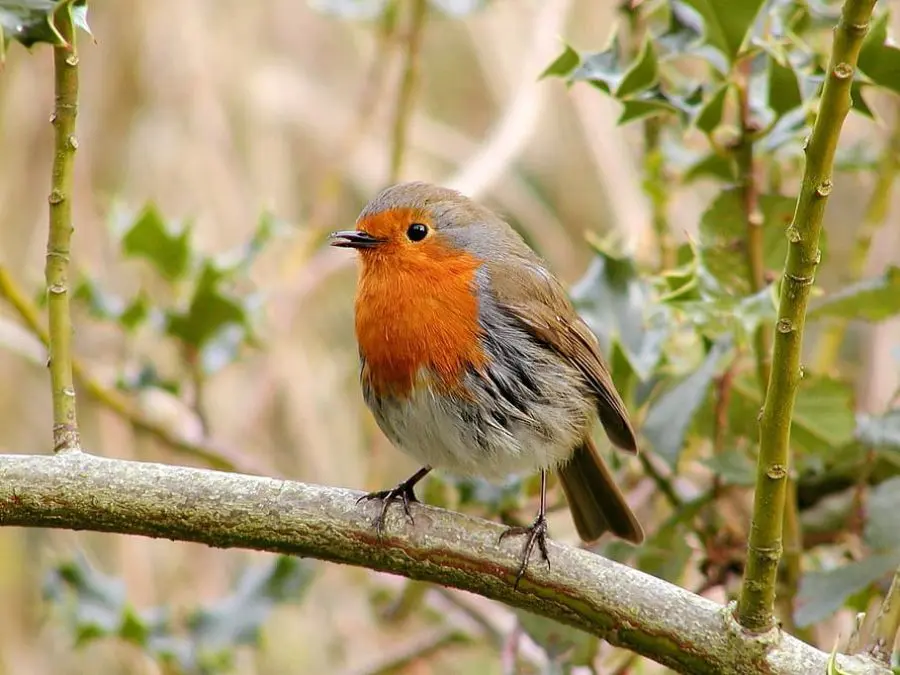
Hey there, nature lovers! Making a wildlife-friendly yard is an outstanding decision to help native wildlife and improve biodiversity.
By offering meals, shelter, and water, it is potential you will flip your yard correct proper right into a haven for birds, butterflies, bees, and fully completely different creatures.
Let’s uncover one of many easiest methods to make your yard a wildlife-friendly paradise.
Making a Yard That Helps Native Wildlife
Plant Native Species
Why Native Crops Matter: Native crops are tailored to your native surroundings and supply the proper sources for native wildlife. Correct proper right here’s why they’re wanted:
- Meals Present: They provide pure meals sources for pollinators, birds, and fully completely different wildlife.
- Habitat: Native crops present shelter and nesting websites for numerous species.
- Low Repairs: They require quite a bit a lot much less water and care since they’re well-suited to the native native local weather.
Deciding on Native Crops: Listed beneath are some native plant concepts:
- Flowers: Plant wildflowers like coneflowers, black-eyed Susans, and milkweed to draw pollinators.
- Shrubs: Use native shrubs like elderberry, serviceberry, and spicebush for birds and small mammals.
- Bushes: Embody native timber like oak, maple, and dogwood for birds and bugs.
Present Meals and Water
Hen Feeders and Homes: Set up fowl feeders and homes to draw and help native birds. Correct proper right here’s how:
- Feeders: Present quite a few feeders with seeds, suet, and nectar to draw totally fully completely different fowl species.
- Homes: Prepare birdhouses relevant for species in your home, like bluebirds, wrens, and chickadees.
- Placement: Place feeders and homes in secure, quiet areas away from predators.
Water Sources: Present clear water for consuming and bathing. Listed beneath are some concepts:
- Birdbaths: Set up birdbaths at totally fully completely different heights to cater to numerous fowl species.
- Ponds: Create a small pond or water attribute to help amphibians and bugs.
- Water Dishes: Place shallow dishes of water for smaller animals and bugs.
Create Shelter and Nesting Internet sites
Pure Shelter: Use pure elements to produce shelter. Correct proper right here’s what to incorporate:
- Brush Piles: Create brush piles from fallen branches and leaves for small mammals and bugs.
- Rock Piles: Stack rocks to create hiding spots for reptiles and amphibians.
- Deadwood: Depart ineffective timber or logs in place to produce habitats for bugs, birds, and fungi.
Synthetic Shelters: Assemble or purchase shelters for particular wildlife. Listed beneath are some examples:
- Bee Inns: Prepare bee resorts to help solitary bees.
- Bat Homes: Mount bat properties to produce roosting spots for bats.
- Butterfly Homes: Place butterfly properties to provide refuge for butterflies.
Promote a Healthful Ecosystem
Keep away from Chemical compounds: Decrease or eradicate the utilization of pesticides and herbicides. Correct proper right here’s why:
- Pollinator Safety: Chemical compounds can hurt helpful bugs like bees and butterflies.
- Soil Successfully being: Pure soil ecosystems thrive with out chemical interference.
- Water Top of the range: Forestall chemical substances from leaching into water sources.
Compost and Mulch: Use pure compost and mulch to strengthen soil successfully being. Correct proper right here’s how:
- Compost: Create your personal compost from kitchen scraps and yard waste to counterpoint the soil.
- Mulch: Apply mulch to retain moisture, suppress weeds, and help helpful soil organisms.
Encourage Biodiversity: Plant a diverse differ of species to create a balanced ecosystem. Correct proper right here’s why:
- Pollinator Selection: Fully fully completely different crops entice numerous pollinators, supporting a healthful pollinator inhabitants.
- Pest Administration: Biodiversity helps administration pests naturally by encouraging predator species.
- Resilience: A diverse yard is additional resilient to diseases and native local weather variations.
By implementing these wildlife-friendly gardening practices, it is potential you will create a vibrant, thriving yard that helps native wildlife.
Not solely will your yard be a phenomenal oasis, however it could furthermore play an essential place in selling biodiversity and environmental successfully being.
Joyful gardening, and revenue from the company of your new yard firm!
19. Native weather-Resilient Gardening
Hey there fellow inexperienced thumbs! With the altering native local weather, it’s additional wanted than ever to adapt our gardening practices to make sure our gardens thrive.
Native weather-resilient gardening consists of utilizing methods and techniques that assist your yard face up to excessive native climate circumstances and modifications in native local weather patterns.
Let’s uncover one of many easiest methods to make your yard additional resilient to native local weather change.
Adapting Your Yard to Be Resilient to Native local weather Change
Select Native weather-Resilient Crops
Native and Drought-Tolerant Crops: Choose crops which is maybe naturally tailored to your native native local weather and might face up to durations of drought. Correct proper right here’s why:
- Native Crops: These crops are tailored to native circumstances and usually are inclined to thrive with quite a bit a lot much less repairs.
- Drought-Tolerant Crops: Crops like lavender, sage, and succulents can survive with minimal water.
Quite a few Plant Choice: Plant quite a few species to create an additional resilient yard. Correct proper right here’s how:
- Biodiversity: A diverse yard is manner a lot much less inclined to pests and diseases.
- Fully fully completely different Bloom Occasions: Plant species with diverse bloom occasions to make sure common security and resilience all 12 months prolonged.
Water Administration
Setting nice Watering Methods: Defend water and guarantee your crops get what they want. Correct proper right here’s how:
- Drip Irrigation: Use drip irrigation methods to ship water on to the roots, minimizing waste.
- Mulching: Apply mulch to retain soil moisture, within the discount of evaporation, and defend roots cool.
- Water Harvesting: Accumulate rainwater in barrels and use it to water your yard.
Soil Successfully being and Constructing
Enhance Soil Successfully being: Healthful soil is additional resilient to excessive native climate. Correct proper right here’s how:
- Pure Matter: Add compost and pure matter to strengthen soil constructing and water-holding performance.
- Cowl Crops: Plant cowl crops to guard and enrich the soil all by off-seasons.
- Keep away from Tilling: No-till gardening helps defend soil constructing and prevents erosion.
Microclimates and Shelter
Create Microclimates: Use buildings and plant preparations to create favorable rising circumstances. Correct proper right here’s how:
- Windbreaks: Plant timber or prepare fences to guard your yard from sturdy winds.
- Shade: Use shade cloths or plant taller crops to produce shade for delicate crops.
- Raised Beds: Raised beds can enhance drainage and defend crops from flooding.
Warmth and Chilly Safety
Defend Within the route of Excessive Temperatures: Use these methods to assist your yard survive heatwaves and frosts:
- Mulch: Mulch acts as an insulator, holding soil temperatures common.
- Row Covers: Use row covers to guard crops from frost and intense picture voltaic.
- Watering Schedule: Water crops contained in the early morning or late night to scale back stress all by scorching days.
Sustainable Practices
In the reduction of Carbon Footprint: Implement eco-friendly practices to cut back your yard’s impression on the surroundings. Correct proper right here’s how:
- Composting: Compost kitchen scraps and yard waste to scale back landfill waste and enrich your soil.
- Pure Gardening: Use pure strategies to cope with pests and diseases, avoiding artificial chemical substances.
- Renewable Vitality: Use solar-powered yard lights and units to scale back vitality consumption.
Monitoring and Adjusting
Maintain Educated: Regulate native climate patterns and be ready to regulate your gardening practices. Correct proper right here’s what to do:
- Native climate Updates: Typically examine native climate forecasts to anticipate and put collectively for excessive native climate.
- Versatile Planting: Be prepared to regulate planting schedules based mostly on altering native local weather circumstances.
- Assertion: Typically monitor your yard and make important changes to help plant successfully being.
By incorporating these climate-resilient gardening practices, it is potential you will create a yard that not solely survives however thrives contained in the face of native local weather change.
With considerate planning and sustainable methods, your yard is generally a resilient, bountiful area for years to come back again once more.
Joyful gardening, and let’s make our gardens climate-resilient collectively!
20. DIY Yard Duties
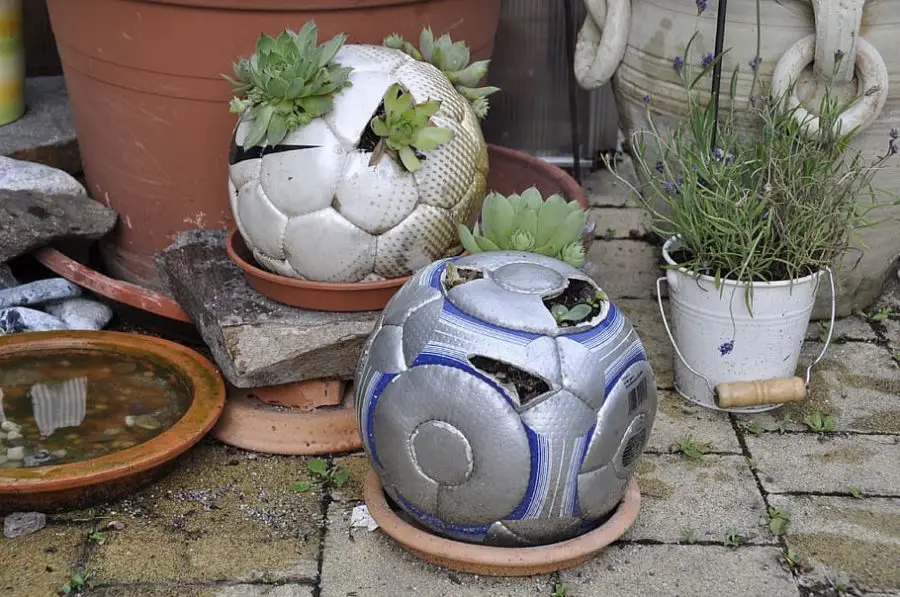
DIY yard duties are a unbelievable decision to reinforce your yard whereas embracing sustainability.
Not solely do they add a private contact to your area, however furthermore they promote eco-friendly practices.
Let’s dive into some artistic and sustainable DIY yard duties which you’d begin for the time being.
Sustainable DIY Duties for the Yard
Upcycled Planters
Repurpose Family Objects: Flip repeatedly objects into distinctive planters. Listed beneath are some concepts:
- Earlier Tires: Paint and stack earlier tires to create vibrant, sturdy planters.
- Mason Jars: Use mason jars for small herb gardens or succulent reveals.
- Picket Crates: Line picket crates with panorama supplies and fill them with soil for rustic planters.
Vertical Gardens
Assemble Vertical Buildings: Maximize your gardening area with vertical gardens. Correct proper right here’s how:
- Pallet Gardens: Use picket pallets to create a vertical yard by along with soil and crops between the slats.
- Hanging Pots: Dangle pots from partitions or fences to develop herbs, flowers, or small greens.
- Gutter Gardens: Mount earlier gutters on a wall or fence and plant shallow-rooted greens like lettuce and herbs.
Composting Purposes
DIY Compost Bins: Create your personal compost system to recycle kitchen scraps and yard waste. Correct proper right here’s how:
- Wire Bin: Kind a circle with wire mesh, safe it, and begin along with compostable gives.
- Pallet Bin: Use picket pallets to assemble a three-sided compost bin, leaving one aspect open for easy entry.
- Tumbler: Assemble a rotating compost tumbler from a barrel to hurry up the composting course of.
Rainwater Harvesting
Accumulate Rainwater: Set up a system to assemble and use rainwater in your yard. Correct proper right here’s what to do:
- Rain Barrels: Prepare rain barrels on the underside of downspouts to assemble runoff out of your roof.
- DIY Diverter: Create an easy diverter to channel rainwater from gutters into your rain barrels.
- Soaker Hoses: Be a part of soaker hoses to your rain barrels to water your yard efficiently.
Yard Furnishings
Assemble Eco-Good Furnishings: Use sustainable gives to create yard furnishings. Listed beneath are some duties:
- Pallet Furnishings: Rework picket pallets into yard benches, tables, and chairs.
- Log Benches: Use enormous logs or tree stumps to create pure seating areas.
- Reclaimed Wooden: Assemble yard furnishings from reclaimed wooden to scale back waste and add enchantment.
Wildlife Habitats
Help Native Wildlife: Create habitats to draw helpful wildlife to your yard. Correct proper right here’s how:
- Birdhouses and Feeders: Assemble birdhouses and feeders from scrap wooden to help native fowl populations.
- Bee Inns: Use bamboo sticks or drilled logs to make nesting websites for solitary bees.
- Butterfly Puddling Stations: Create shallow dishes full of sand and water to draw butterflies.
Raised Yard Beds
Assemble Raised Beds: Assemble raised beds to strengthen soil top of the range and accessibility. Correct proper right here’s how:
- Recycled Wooden: Use reclaimed wooden to assemble the physique in your raised beds.
- Cinder Blocks: Put collectively cinder blocks to selection a sturdy, low-cost raised mattress.
- Galvanized Tubs: Repurpose enormous galvanized tubs as raised yard beds for a latest look.
Yard Decor
Create Sustainable Decor: Add persona to your yard with eco-friendly decor. Listed beneath are some concepts:
- Wind Chimes: Make wind chimes from earlier silverware, keys, or fully completely different residence objects.
- Yard Markers: Use stones, picket spoons, or damaged pottery devices as plant markers.
- Stepping Stones: Create personalised stepping stones utilizing cement and ornamental tiles or glass.
Soil Enrichment
Make Your Non-public Fertilizer: Create pure fertilizers to counterpoint your soil. Correct proper right here’s how:
- Compost Tea: Steep compost in water for just a few days to create nutrient-rich compost tea.
- Eggshell Fertilizer: Crush eggshells and sprinkle them spherical crops so as in order so as to add calcium to the soil.
- Banana Peel Fertilizer: Soak banana peels in water and use the liquid to water your crops, offering potassium and phosphorus.
These sustainable DIY yard duties are a good way to strengthen your yard whereas being sort to the surroundings.
Get artistic, have pleasurable, and revenue from the rewards of your eco-friendly efforts. Joyful gardening, and glad DIYing!
FAQ: Sustainable Gardening
Welcome to our FAQ half on sustainable gardening! Whether or not or not or not you’re merely beginning out or attempting to deepen your knowledge, these choices will allow you to create a yard that’s eco-friendly and thriving.
Q: What does a sustainable yard seem as if?
A: A sustainable yard selections quite a few native crops, makes use of compost and pure mulches, conserves water by way of rainwater harvesting and drip irrigation, and attracts helpful wildlife.
It’s designed to work with the native surroundings, minimizing waste and chemical use.
Q: What crops are finest for a sustainable yard?
A: Native crops are good for sustainable gardens on account of they’re tailored to the native native local weather and require quite a bit a lot much less water and upkeep.
Moreover, drought-tolerant crops like lavender, sage, and succulents, together with perennial greens and herbs, are nice selections.
Q: Which is the proper event of a sustainable apply that could possibly be utilized in a yard?
A: Composting is a critical event of a sustainable gardening apply.
It recycles kitchen scraps and yard waste into nutrient-rich soil, decreasing the necessity for chemical fertilizers and enhancing soil successfully being naturally.
Q: Why is house gardening sustainable?
A: Dwelling gardening is sustainable on account of it reduces the necessity for transporting meals over extended distances, conserves water with ambiance nice irrigation methods, and minimizes waste by way of composting.
It furthermore promotes biodiversity and gives trendy, native produce.
Q: What’s a self-sustaining yard referred to as?
A: A self-sustaining yard can also be known as a “permaculture yard.” Any such yard is designed to be regenerative and work in concord with nature, requiring minimal exterior inputs.
Q: How do you assemble a self-sustainable yard?
A: To assemble a self-sustainable yard, begin by planting native species and perennials, utilizing compost and mulch to counterpoint the soil.
Incorporate rainwater harvesting methods, apply crop rotation and companion planting, and keep away from chemical pesticides by utilizing pure pest administration strategies.
Q: What’s the distinction between gardening and permaculture?
A: Gardening often focuses on rising crops for meals or aesthetic capabilities, often utilizing customary strategies.
Permaculture, however, is a holistic methodology that designs agricultural ecosystems to be sustainable and self-sufficient, mimicking pure ecosystems.
We hope these choices allow you to in your journey to making a sustainable and thriving yard. Joyful gardening!
Introduction to Sustainable Gardening Conclusion
Gardening sustainably is a rewarding endeavor that not solely gives trendy, nutritious meals nonetheless in addition to contributes to the successfully being of the environment.
By adopting sustainable practices, it is potential you will create a vibrant, resilient yard that helps native wildlife, conserves sources, and fosters a deeper reference to nature.
Let’s summarize the important parts we’ve lined and spotlight some key takeaways.
Recap of Key Matters
1. Composting Strategies
Understanding and implementing totally fully completely different composting strategies, akin to conventional composting, vermicomposting, bokashi composting, and lasagna composting, can considerably enrich your soil and within the discount of waste.
2. Permaculture Ideas
By making use of permaculture pointers, akin to observing and interacting, utilizing renewable sources, integrating fairly than segregating, and catching and storing vitality, it is potential you will create a self-sustaining yard that works in concord with nature.
3. Rainwater Harvesting
Gathering and utilizing rainwater efficiently by way of methods like rain barrels, soakaway pits, swales, and rain gardens helps defend water and ensures your crops get the pure hydration they want.
4. Sustainable Soil Administration
Sustaining healthful soil by way of practices like composting, mulching, cowl cropping, and crop rotation ensures your yard stays fertile and productive with out counting on chemical fertilizers.
5. Pure Pest Administration
Utilizing pure pest administration strategies, akin to encouraging helpful bugs, companion planting, neem oil, and diatomaceous earth, helps defend your crops whereas minimizing environmental impression.
6. Companion Planting
Strategically planting applicable species collectively can improve development, deter pests, and enhance soil successfully being, making your yard additional resilient and productive.
7. Native Crops
Incorporating native crops into your yard helps native wildlife, reduces repairs, and promotes biodiversity, making a balanced and sustainable ecosystem.
8. Edible Landscaping
Designing a yard that produces meals, by combining aesthetic and sensible crops, maximizes area and sources whereas offering trendy produce.
9. Metropolis Gardening
Adopting metropolis gardening methods, akin to vertical gardening, container gardening, and ambiance nice watering practices, means you’ll be able to develop a thriving yard even in small areas.
10. Greenhouses and Chilly Frames
Utilizing greenhouses and chilly frames sustainably extends your rising season and protects crops from harsh native climate, guaranteeing a mild current of updated produce.
11. No-Until Gardening
Practising no-till gardening preserves soil constructing, reduces erosion, and promotes soil successfully being, making it a sustainable and labor-saving gardening method.
12. Seed Saving
Saving seeds out of your yard helps defend plant varieties, ensures a mild current of favourite crops, and promotes self-sufficiency.
13. Aquaponics and Hydroponics
Implementing aquaponics and hydroponics methods gives ambiance nice, soil-less gardening strategies that defend water and area whereas producing healthful crops.
14. Neighborhood Gardens
Beginning and collaborating in neighborhood gardens fosters social connections, gives entry to trendy produce, and creates inexperienced areas that income all the neighborhood.
15. Wildlife-Good Gardening
Making a yard that helps native wildlife enhances biodiversity and helps create a balanced ecosystem, making your yard a haven for helpful creatures.
16. Native weather-Resilient Gardening
Adapting your yard to be resilient to native local weather change by way of plant different, water administration, soil successfully being, and sustainable practices ensures your yard thrives regardless of altering circumstances.
17. DIY Yard Duties
Collaborating in sustainable DIY yard duties provides a private contact to your yard whereas selling eco-friendly practices and useful helpful useful resource conservation.
By embracing these sustainable gardening practices, it is potential you will create a yard that isn’t solely productive and nice nonetheless in addition to environmentally good.
Joyful gardening, and may your inexperienced area thrive!
















